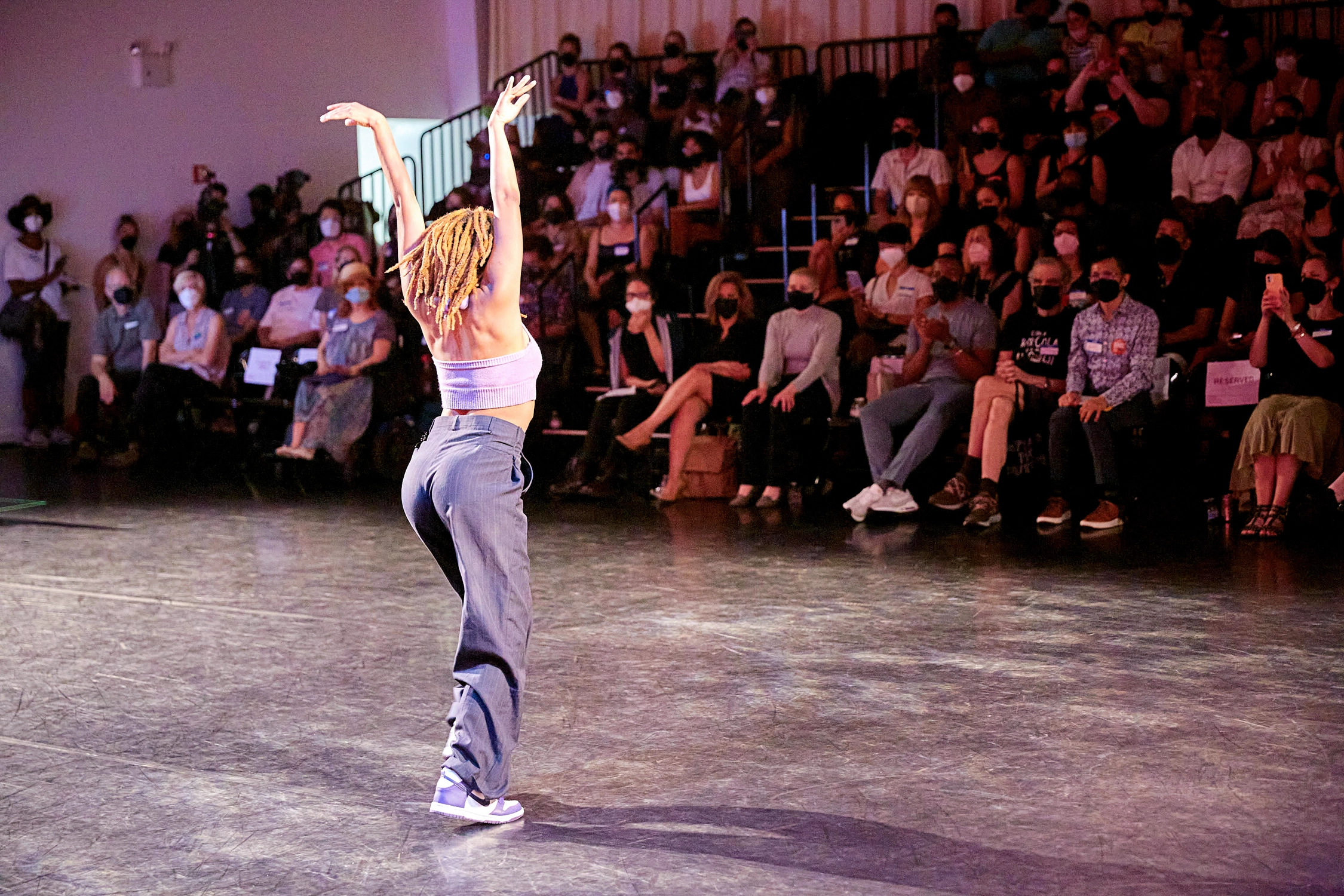Findings From Dance/NYC’s Industry-Wide Census Will Be Published This Month
Most dance artists in New York City know certain things to be true: that wages are often unfairly low, for instance, and that it’s usually necessary to do some work outside of dance to survive.
But in a vast field consisting of thousands of mostly gig workers performing many jobs throughout the course of one year, concrete data about what it’s like to be a dance worker has been challenging, if not impossible, to come by.
Soon, that will change: After a robust six-month effort to survey at least 25 percent of the dance workforce about their pay, work conditions, needs, experiences, and more, Dance/NYC will release its State of NYC Dance report later this month.
The report will contain findings from the Dance Industry Census, including an extensive survey completed by more than 1,600 individual dance workers and entities—broadly defined as anyone whose work intersects with dance—plus qualitative findings from roundtables held across the New York City metro area, during which participants could respond to the data collected thus far and share their own experiences. It will also include suggested action items based on the report’s findings.
“We’ve done some deep thinking with the data to offer the field: Here are the numbers, here’s what we think they mean, and here are the levers of power you can weigh on if you’re interested in changing some of these realities,” says Candace Thompson-Zachery, Dance/NYC’s director of programming and justice initiatives.
Dance/NYC is not new to extensive research studies: In the past, the organization has published reports on immigrant artists, small-budget dancemakers, the impact of COVID-19, and more. It has also done previous State of NYC Dance reports as recently as 2016, but those were more focused on dance organizations than individuals. “We landed on the fact that in order to make change and really strengthen the ecosystem, we had to look more closely at individual dance workers,” says Thompson-Zachery.
Though the final report won’t be public until mid-December, Dance/NYC has released some preliminary data and takeaways from the census—like that most dance workers earn limited income from their work in dance, have jobs outside of dance, and believe they are not paid fair wages. These findings and more will come to life at a performance event and gathering December 12 at Chelsea Factory, where Sydnie L. Mosley Dances and Ladies of Hip-Hop “will help us create the space and interpret the data,” says Thompson-Zachery. The event, which will also include a community meal, is free and open to the public.
“We want people to show up and to prioritize looking a bit more critically at the dance community,” says Thompson-Zachery. “We’re hoping we get real-time connections between people that can further galvanize us towards taking action and advancing the kind of change we’re looking for.”
Moving forward, the report will live on the DWR (Dance. Workforce. Resilience.) Hub, a new digital tool created partly in response to needs expressed in the survey and roundtables. Dance/NYC sees it as a one-stop shop for any resource a dance worker could want, from contract templates to racial justice recommendations to an interactive compensation chart.
Thompson-Zachery hopes the report will empower dance workers and give them a broader context for the challenges they’re facing. “We run into pain points, and we don’t quite know what to do with them,” she says. “We talk in the hallway outside rehearsal, but we don’t quite understand how all the pieces fit together.”
And now, when Dance/NYC—and whoever else wants to take advantage of the data they’ve amassed—makes the case that dance workers need more financial support or resources, they’ll have receipts. “It provides ammunition,” says Thompson-Zachery. “Because now we have numbers that we can pull to support the kind of claims we’ve been making around what the sector needs.”




